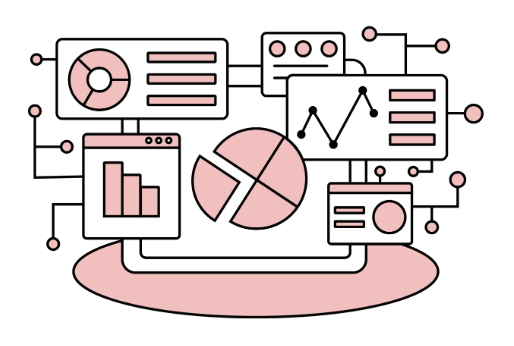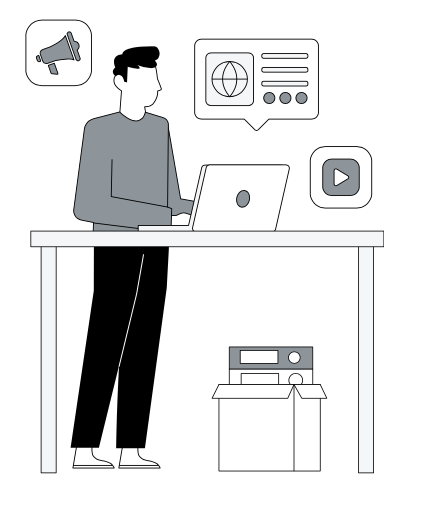How to leverage data and analytics to improve visual content
- Ayaan Ajwani
- May 9
- 6 min read
In a world where attention spans are shorter than ever, captivating visual content is the key to standing out in a sea of noise. But how do you ensure your visuals don’t just catch the eye but also resonate with your audience? Enter data and analytics—transformative tools that can elevate your visual storytelling from mediocre to mesmerizing. In this blog post, we’ll explore powerful strategies for leveraging insights and metrics to craft stunning visuals that not only draw viewers in but also drive engagement and conversions. Whether you're a seasoned marketer or a budding content creator, get ready to unlock the secrets behind data-driven design that captivates and connects! Let’s dive into how you can harness the power of analytics to create compelling visuals that truly speak volumes.

Why Content Analytics Matter?
Content analytics can be defined as the process of collecting, analyzing, and interpreting data related to your content's performance. It helps you gain insights into how your audience interacts with your visual content, what resonates with them, and what needs improvement. In this section, we will discuss why content analytics matters in leveraging data and analytics to improve visual content.
1. Measure Performance: Content analytics provides you with real-time data on how your visual content is performing across different platforms. It gives you valuable insights on metrics such as views, clicks, shares, engagement rate, conversion rate, etc. With this information at hand, you can determine which type of visual content performs best for your business and focus on creating more of it.
2. Understand Your Audience: Through content analytics tools like Google Analytics or social media insights platforms, you can learn more about your target audience's demographics (age group, gender), interests (top pages viewed), behavior (bounce rate), etc. This allows you to tailor your visuals according to their preferences and create targeted campaigns that resonate with them.
How to Use Data to Optimize Your Visual Content Strategy?
Find the Right Data Sources
Before you start tweaking your visuals, you need solid data. Some of the best sources include social media analytics from platforms like Facebook Insights, Instagram and Twitter Analytics, which provide real-time content marketing analytics engagement data. Google Analytics can track how users interact with visuals on your website, while heatmap tools like Hotjar and Crazy Egg show where users focus their attention.
A/B testing tools such as Optimizely and VWO help compare different visuals to determine which performs best. Additionally, direct customer feedback through surveys give valuable insights into what your audience actually prefers.
Track Key Performance Metrics
We know that guessing won’t cut it when it comes to tracking success. To know if your visuals are effective, choose key performance indicators (KPIs) based on your objectives. Engagement rate—measured by likes, shares, and comments—indicates how well your content resonates, while click-through rate (CTR) tracks how often people click on your visual content, such as ads or social media posts.
Conversion rate measures how many viewers take a desired action after interacting with your content, while bounce rate helps identify if people are leaving your page too quickly—potentially signaling a need for more engaging visuals. Time spent on that page is another crucial metric, as longer durations suggest compelling content. Social shares can also reflect the virality of your content. Keep reading to learn more about the best KPIs to track.
A/B Test Your Visuals to Find What Works
Not all visuals are created equal, which is why A/B testing is essential. Try experimenting with different color schemes, as some hues naturally attract more engagement. Test whether images or videos perform better for your audience and explore typography styles—bold and eye-catching vs. clean and minimal.
Another factor to consider is the balance between graphic-heavy and minimalist designs. Some brands find that a simple, clean look works best, while others thrive with more vibrant, detailed visuals.
Buzzfeed frequently A/B tests their social media thumbnails. By analyzing which version gets more clicks, they ensure their content reaches a wider audience.
Use Heatmaps to See What Grabs Attention
Ever wonder where people’s eyes actually go when they land on your website? Heatmaps provide a visual representation of user behavior, showing which areas of an image attract the most attention and where people are clicking (or ignoring).
Businesses use heatmaps to optimize key visual elements. For instance, if users focus on a specific section of an image, brands can highlight that area in future designs. Call-to-action (CTA) buttons can also be strategically placed for better conversions based on heatmap insights.
Optimize for Different Platforms
A visual that works on Instagram might flop on Twitter. Data analytics help fine-tune visuals for each platform by revealing ideal image dimensions, best posting times, and preferred content types.
A HubSpot study found that Instagram carousels generate higher engagement than single-image posts. As a result, brands have shifted their content strategy to include more carousel posts, maximizing engagement.
Use AI & Automation for Smarter Insights
AI tools can predict which visuals will perform best before you even hit publish. Platforms like Canva, Adobe Sensei, and Google Vision analyze factors such as color psychology, object recognition, and sentiment analysis.
By leveraging AI and these other content analytics tools, brands can make data-driven decisions about visuals without relying on guesswork. Automation tools also help streamline content creation, ensuring visuals are optimized for maximum impact.
Brands That Are Using Analytics to Enhance Visual Storytelling
Coca-Cola: Data-Backed Visual Storytelling
Coca-Cola harnesses consumer sentiment analysis and social media analytics to craft compelling visual campaigns. By analyzing user-generated content and engagement trends, Coca-Cola refines its branding materials to align with audience preferences. For instance, their “Share a Coke” campaign leveraged real-time social media insights to identify popular names and phrases, ensuring the campaign remained relevant and highly engaging.
Airbnb: Optimized Imagery for Higher Conversions
Airbnb utilizes AI-powered image recognition and A/B testing to determine which listing photos drive the most bookings. The company found that high-quality, well-lit images showcasing entire spaces rather than close-ups significantly improved conversion rates. By analyzing guest behavior and click-through rates, Airbnb provides hosts with recommendations on how to optimize their listing photos for maximum impact and more conversions.
Common KPIs to Track in Content Marketing Analytics
In content marketing, success isn’t just about creating compelling articles, videos, infographics, or carousels—it’s about measuring their overall impact and what that means for the brand’s success. That’s where KPIs come in. These metrics help marketers assess the effectiveness of their content and refine strategies based on data-driven insights. When combined with visual content, data analytics becomes even more powerful, helping brands optimize engagement and conversion rates.
One of the first metrics to track in content marketing is traffic. Understanding how many people visit your content and where they come from is essential. Page views indicate the total number of times a piece of content has been accessed, while unique visitors provide insight into the number of distinct users engaging with your content. Referral traffic helps identify whether audiences are coming from search engines, social media, or other websites, allowing marketers to focus on high-performing channels.
Beyond traffic, engagement metrics are key to understanding how users interact with content. Time on page measures how long visitors stay on a particular page, indicating whether the content is captivating or too long. A high bounce rate—when users leave after viewing just one page—might suggest that the content isn’t meeting their expectations. Furthermore, social shares and comments reveal how often content is shared and discussed, signaling audience interest and participation.
For the ultimate goal of conversion, Key Performance Indicators like click-through rate show the percentage of users who take action after seeing a call-to-action. Lead generation metrics, such as form submissions and downloads, help determine whether the content is effectively driving potential customers down the sales funnel. Conversion rate measures how many visitors to your site complete a desired action, like signing-up or booking a ticket, making it a critical metric for evaluating marketing content analytics.
Conclusion
Visual content plays a crucial role in content marketing. However, simply adding visuals isn’t enough. Data analytics helps marketers understand which visual formats perform best and why. Tools like Hotjar reveal where users focus their attention, allowing marketers to optimize visual placement and design. If users frequently scroll past an infographic without engaging, adjustments can be made to improve visibility and impact.
Visual content is more than just making things look good—it’s about making them work better. And with the right data, you can create visuals that don’t just catch the eye but actually drive engagement, clicks, and conversions.




Comments